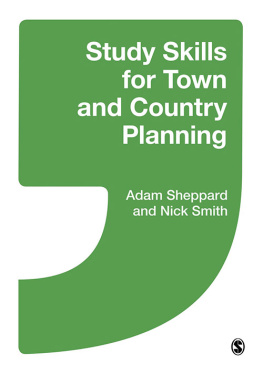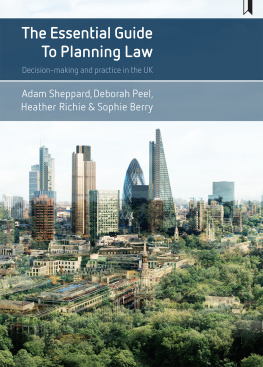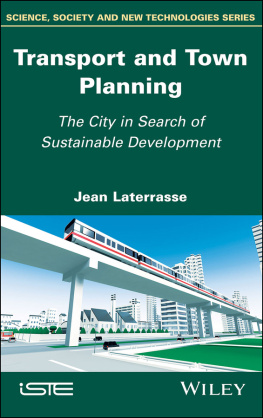

First edition published in Great Britain in 2019 by
Policy Press University of Bristol 1-9 Old Park Hill Bristol BS2 8BB UK Tel +44 (0)117 954 5940 e-mail
North American office: Policy Press c/o The University of Chicago Press 1427 East 60th Street Chicago, IL 60637, USA t: +1 773 702 7700 f: +1 773-702-9756 e:
Policy Press 2019
British Library Cataloguing in Publication Data
A catalogue record for this book is available from the British Library.
Library of Congress Cataloging-in-Publication Data
A catalog record for this book has been requested.
ISBN 978-1-4473-4443-8 paperback
ISBN 978-1-4473-4444-5 ePub
ISBN 978-1-4473-4445-2 Mobi
ISBN 978-1-4473-4446-9 ePdf
The right of Adam Sheppard, Nick Croft and Nick Smith to be identified as the authors of this work has been asserted by them in accordance with the Copyright, Designs and Patents Act 1988.
Every reasonable effort has been made to obtain permission to reproduce copyrighted material. If, however, anyone knows of an oversight, please contact the publisher.
All rights reserved: no part of this publication may be reproduced, stored in a retrieval system, or transmitted in any form or by any means, electronic, mechanical, photocopying, recording, or otherwise without the prior permission of Policy Press.
The statements and opinions contained within this publication are solely those of the authors and not of the University of Bristol or Policy Press. The University of Bristol and Policy Press disclaim responsibility for any injury to persons or property resulting from any material published in this publication.
Policy Press works to counter discrimination on grounds of gender, race, disability, age and sexuality.
Cover design by Qube Design Associates, Bristol
Front cover image: istock
Readers Guide
This book has been optimised for PDA.
Tables may have been presented to accommodate this devices limitations.
Image presentation is limited by this devices limitations.
Contents
Adam Sheppard MRTPI FRGS FHEA is a planning academic at UWE Bristol with a background from professional practice. After working as a development management planner in local government, Adam moved into academia. He now teaches and researches site scale planning implementation and decision-making.
Nick Croft MRTPI AFHEA is a senior lecturer at UWE Bristol teaching and researching local and neighbourhood planning policy and delivery. Nick joined UWE after a long and varied career in local government, where he undertook roles in policy preparation, development management, waste and minerals, and regeneration.
Nick Smith MRTPI FRGS joined UWE Bristol from planning practice where he worked in private sector consultancy on a diversity of notable projects. Nick is the Head of the Planning School at UWE Bristol, where he also teaches and researches strategic planning, infrastructure, green infrastructure and major projects.
There are many people and organisations to whom we would like to express our gratitude for their advice and encouragement in shaping the books content.
First, our thanks to Dr Keith Lilley at Queens University Belfast for authorisation to use his plan of Conwy Castle and town walls (as part of AHRC-funded research); the University of Texas Libraries, Austin, US, for permission to use an adaptation of the Port of Piraeus illustration; and Nick Matthews at the Town and Country Planning Association for providing the Garden City diagrams;
In addition, we would like to thank our colleagues at UWE Bristol for their support and inspiration.
Thank you also to the team at Bristol University Press, for their guidance and assistance in publishing the book.
Finally, and importantly, we would like to thank our families and friends for their love, support and assistance. The completion of this book was only possible because of you.
Thank you one and all.
Adam Sheppard, Nick Croft and Nick Smith (2018)
When we think of the governance of place, we may well think of forms of government and key actors and the manner in which their policies, plans and decisions impact upon us and where we live. Planning is central to this: town and country planning affects every element of the world we live in; every road we drive down; every street we walk along; every building, landscape and space we look at. Our experiences are shaped by the planning system in some way. This might be through a specific decision, or as a result of the provisions of legislation, but the universal control provided through the planning system makes it an enormously powerful influencer on our lives. Consequently, it is important to understand the role and operation of planning in shaping and influencing our society and environment.
Despite this, our engagements with the act, art and activities of planning as a society are sometimes quite specific and limited: a neighbour planning an extension, a change of use from a shop to a takeaway, a concern over an area that is struggling economically and/or socially, a greenfield development proposal, a regeneration scheme. In some cases, it is perhaps only when we are directly and personally touched by change that we genuinely engage with planning and develop a true understanding of its scope, the way it works, the way decisions are made, and on what basis. This is understandable in many respects, but the challenge then becomes one of orientation and effective engagement by interested parties, potentially within a time-sensitive context.
For those working in planning, or in a related discipline, extensive knowledge and understanding is needed to engage effectively. This requires comprehensive training and education, whether formal or informal. Planning itself is a complex and multifaceted world, which requires professionals with a diverse and varied skills set and knowledge base to work together. This sits within a wider context of the process of development, bringing together many other professions involved in development in some way.
This book is intended to be a first step in developing your knowledge and understanding of planning. It includes a historical narrative as well as an exploration of the planning system and how it sits within professional and wider governance of place. You could be a student, home owner, neighbour, politician, community group, business person, built environment professional or simply interested in the subject; this book has been written to engage, inform and interest you.
So, whether you are beginning your studies in planning, studying a related subject at college or university which involves a need to engage with planning, working in a field linked to planning, or involved in planning or a development project yourself, it is hoped that this book will support the initial development of your knowledge and understanding. It has been designed to be either read from cover to cover, or browsed selectively, whichever context you are approaching it from. We hope you enjoy the book and find value in reading it.
Adam Sheppard, Nick Croft and Nick Smith (2018)
















